The Australian Bureau of Statistics (ABS) has released capital city population data for the 2022-23 financial year, which revealed that Australia’s capital cities grew by a record 517,200 to just shy of 18 million people:
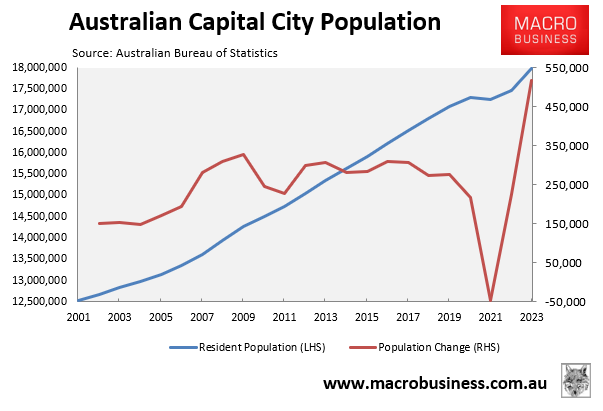
Australia’s capital city population has grown by a whopping 5.5 million people (44%) since 2001.
The next table from the ABS shows that Melbourne (167,484) and Sydney (146,702) drove the nation’s population growth in 2022-23:
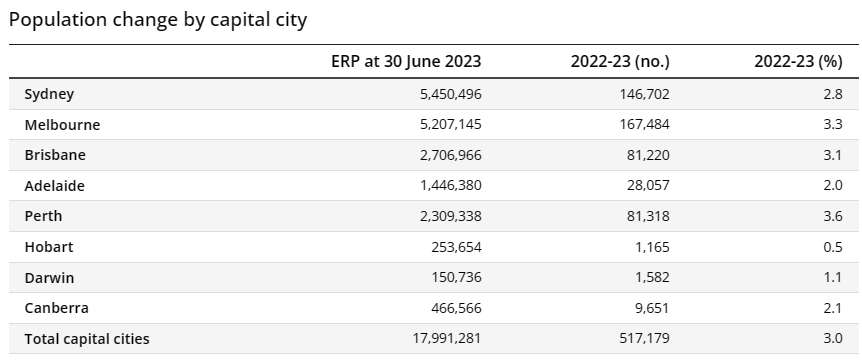
Source: ABS
This growth was overwhelmingly driven by net overseas migration:
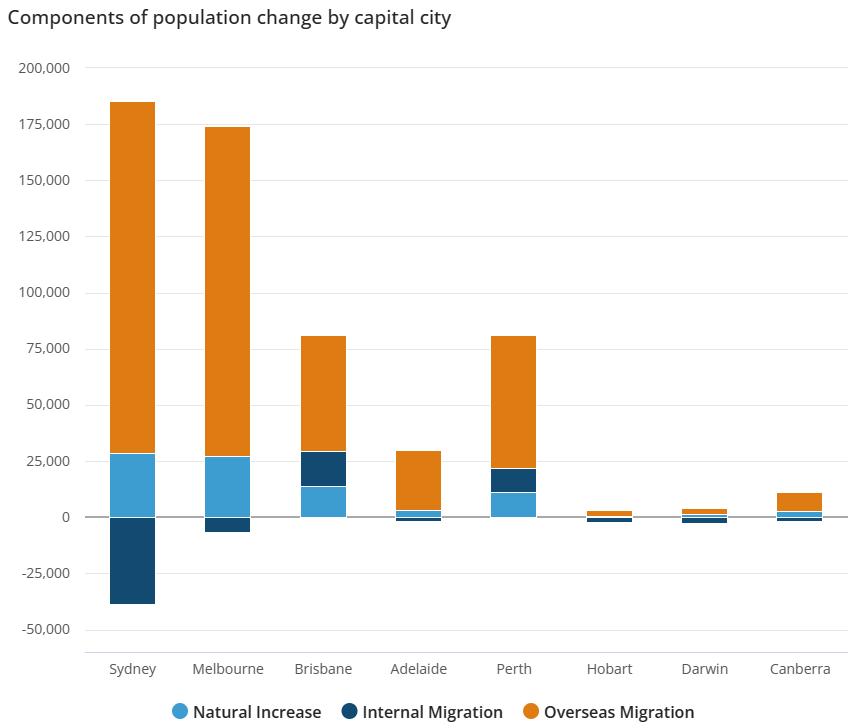
Source: ABS
Sydney received the most net overseas migrants in 2022-23 (i.e. 156,616), followed by Melbourne (146,772).
The next chart shows that Melbourne’s population has grown by an extraordinary 1.7 million people between 2001 and 2023. Sydney (1.35 million), Brisbane (1.0 million) and Perth (850,000) also experienced strong population growth:
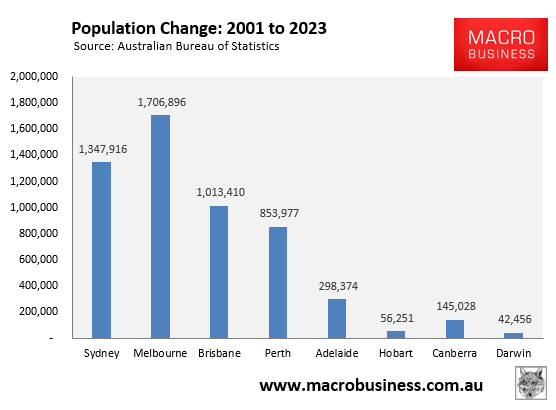
In terms of growth rates, Brisbane (60%) and Perth (59%) experienced the most rapid growth:
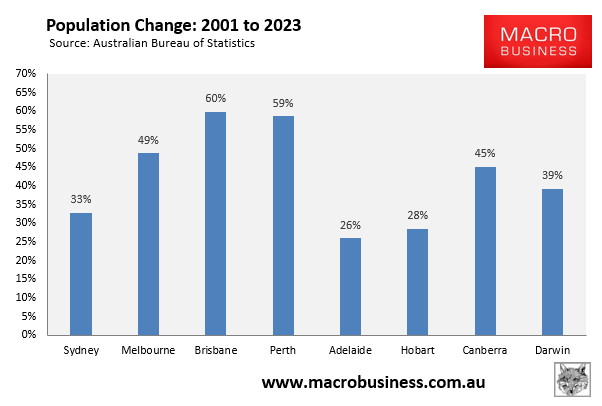
This explosive population growth is the primary reason why Australia’s rental market is experiencing record tightness, with vacancy rates tracking at all-time lows:
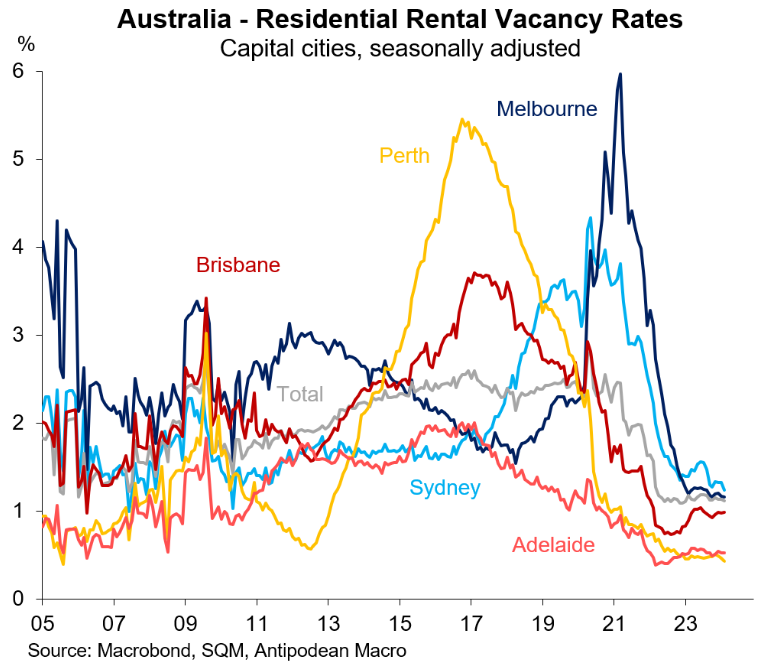
It is also why rental inflation has soared into the stratosphere, causing widespread financial stress and forcing Australians into group housing and homelessness:
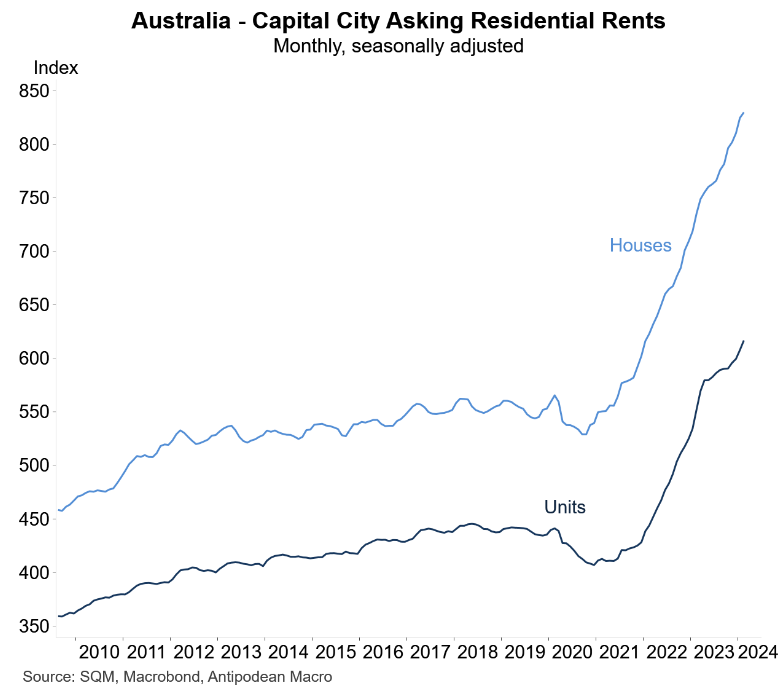
The blame for the rental crisis rests squarely on the shoulders of Labor’s extreme immigration policy.

